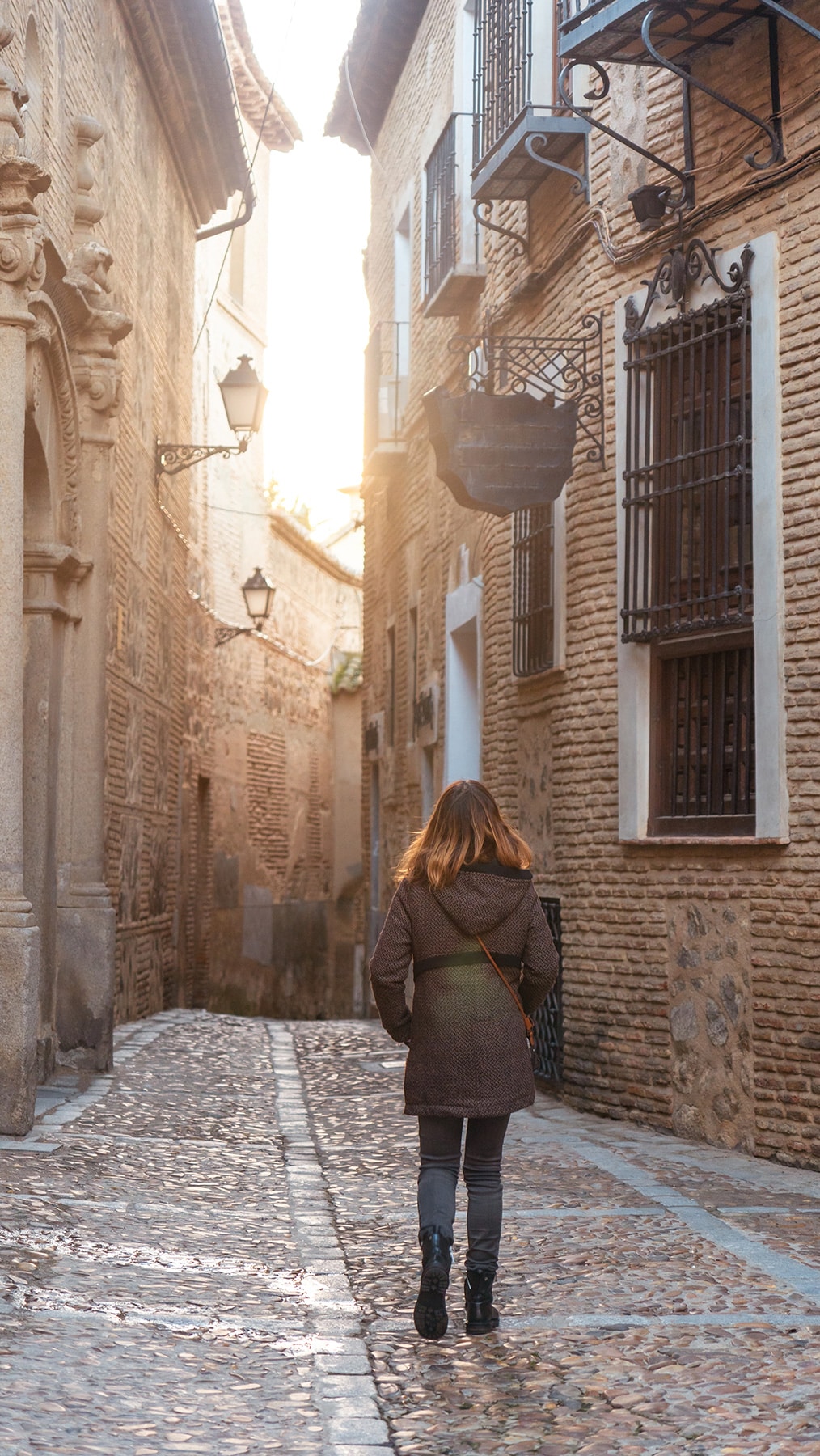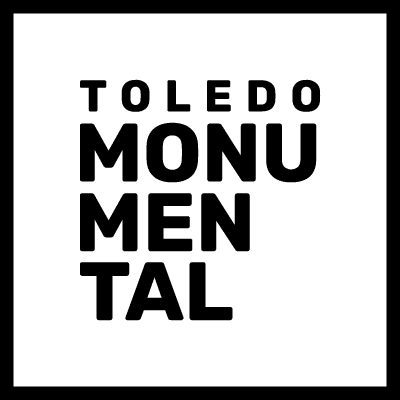Iglesia de los Jesuitas
Its views over the city are unforgettable
VISIT US
Visit the
Iglesia de los Jesuitas
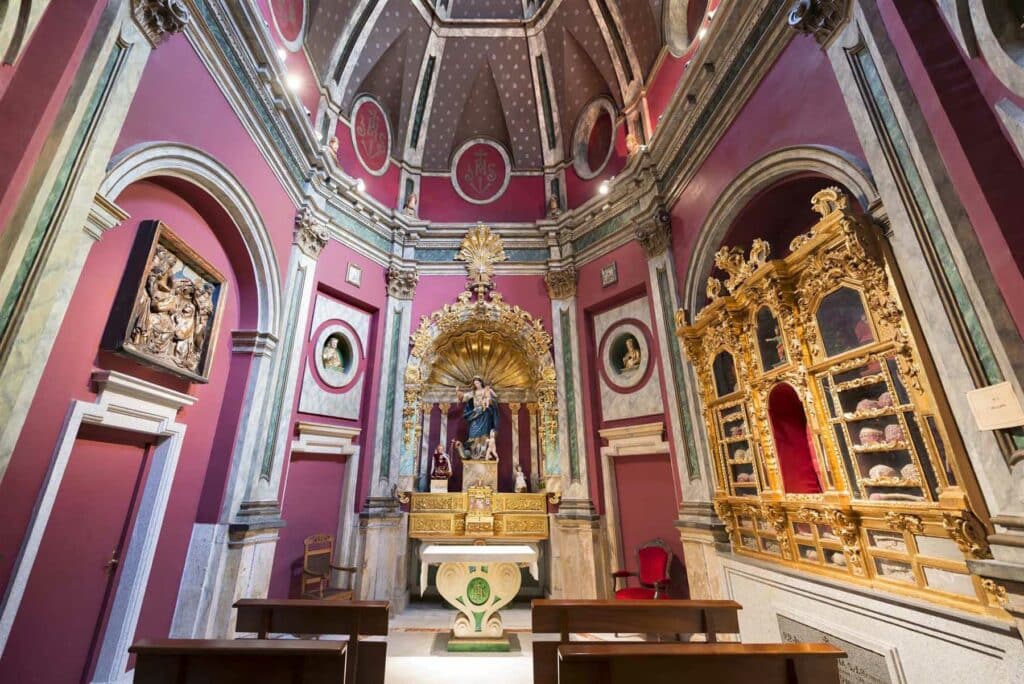
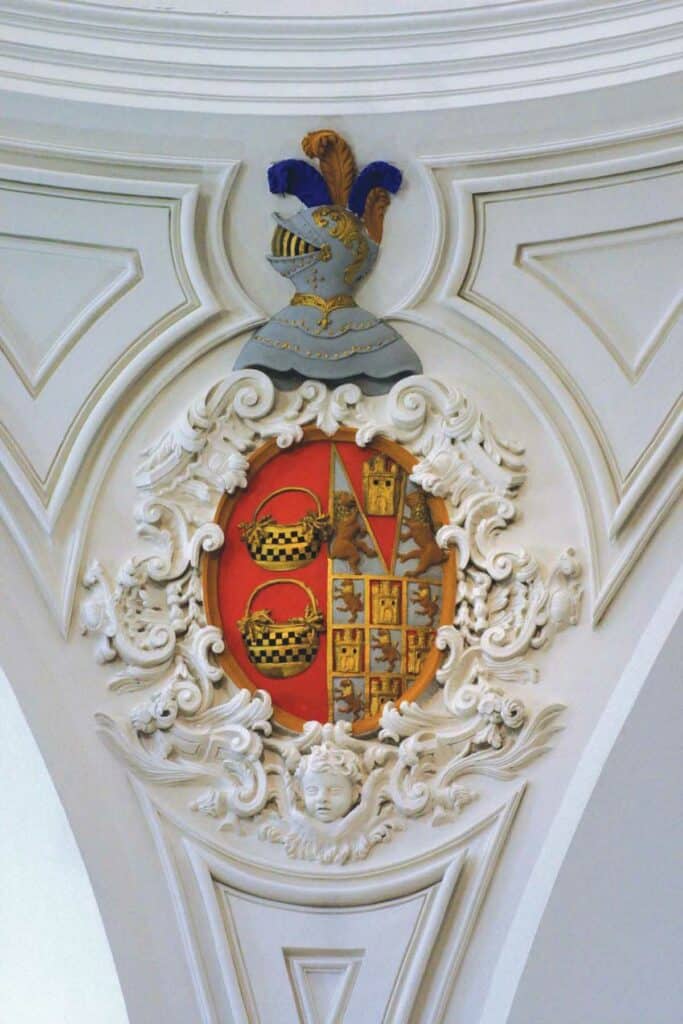
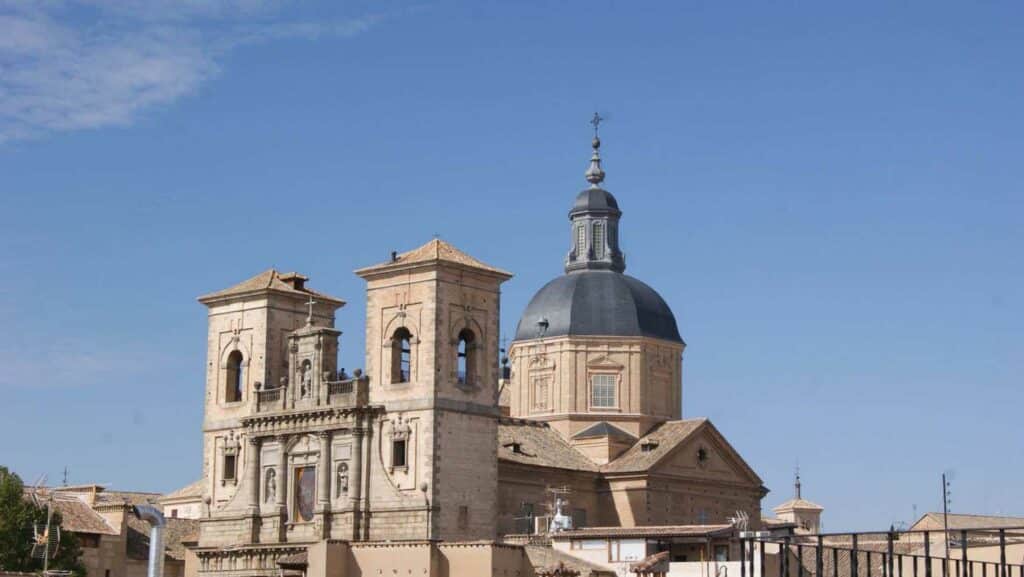
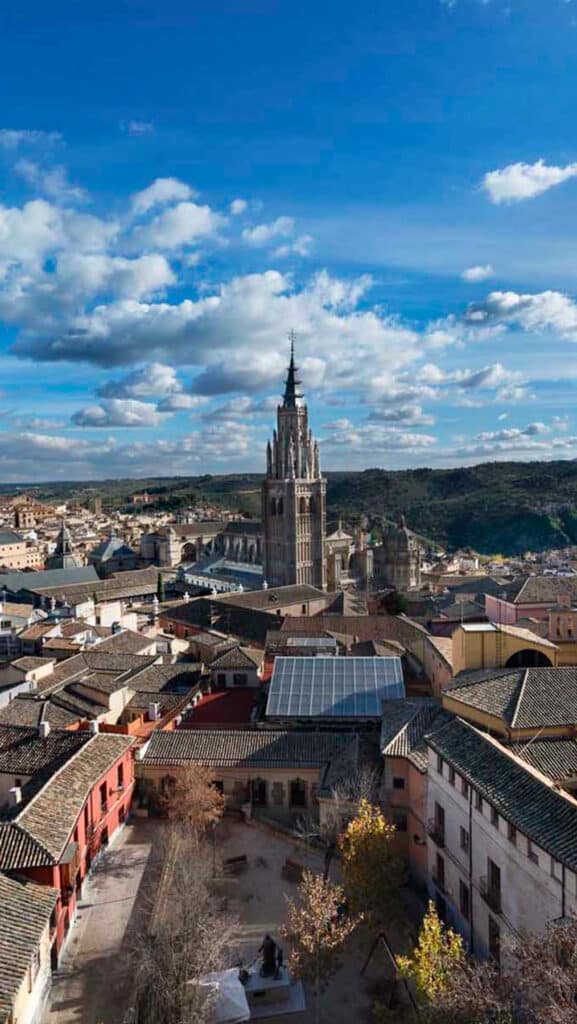
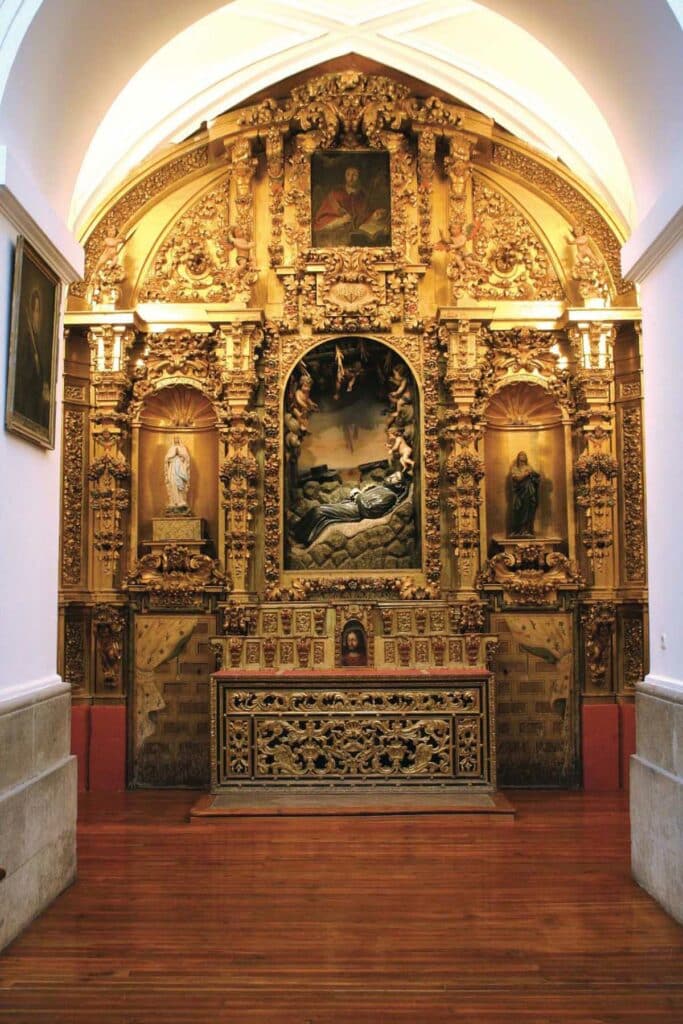
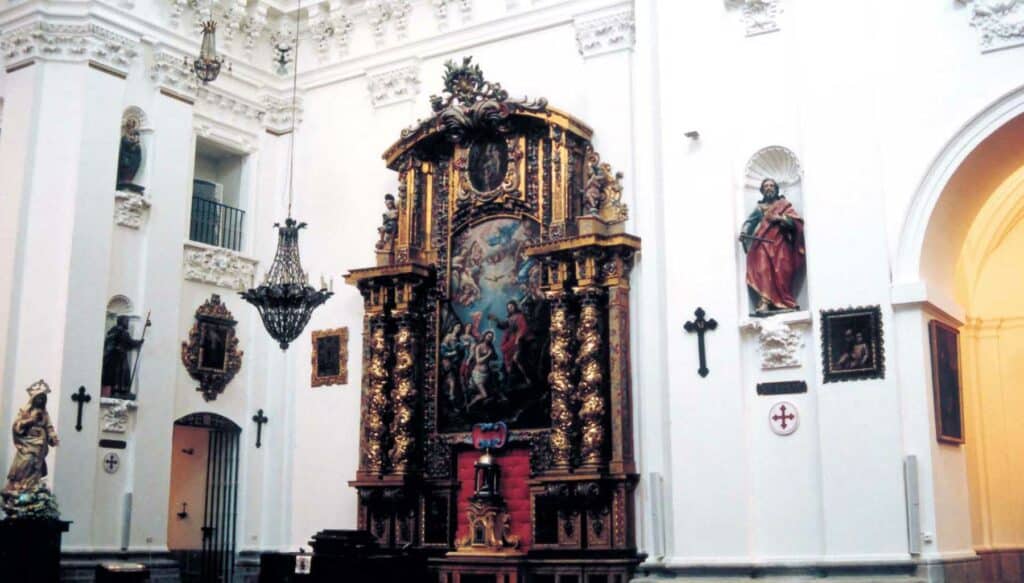
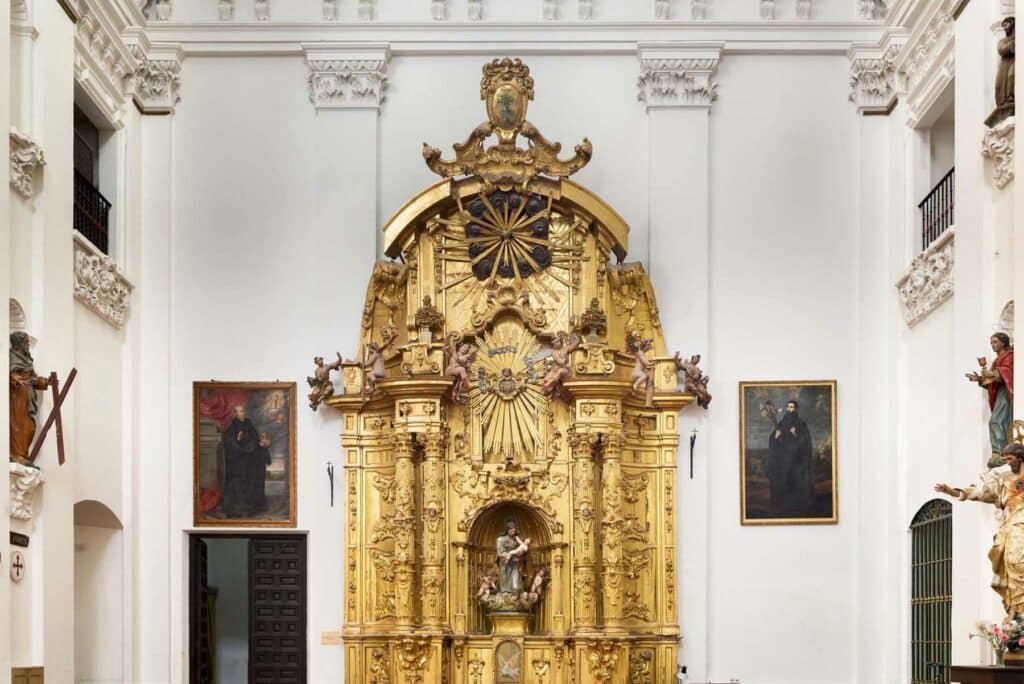
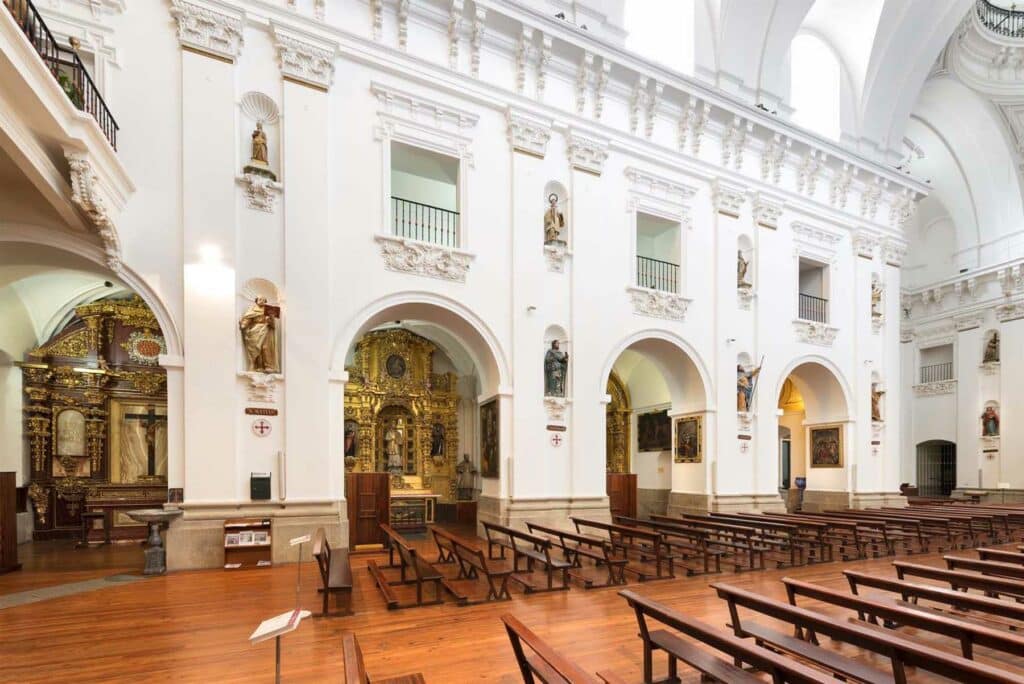
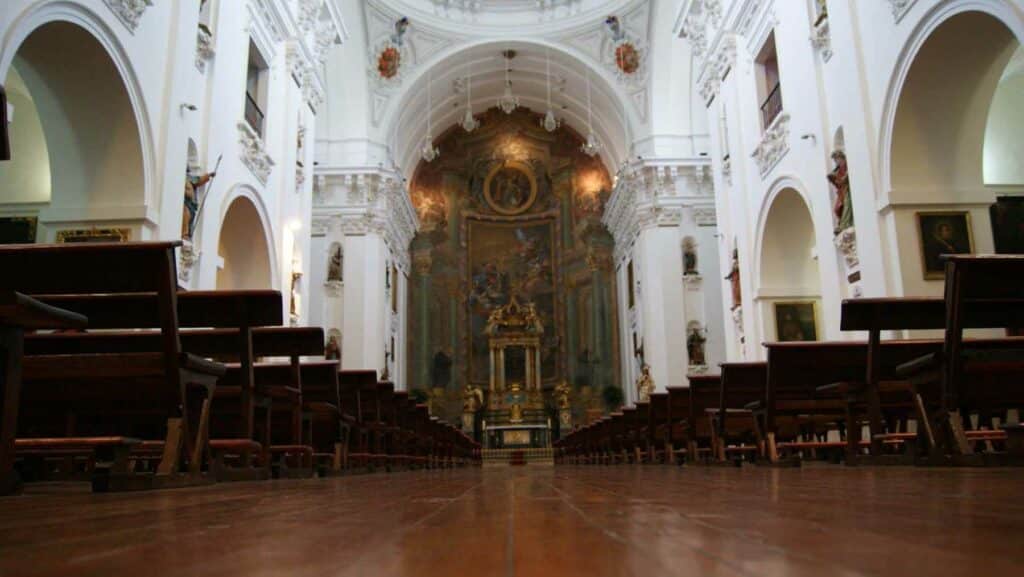
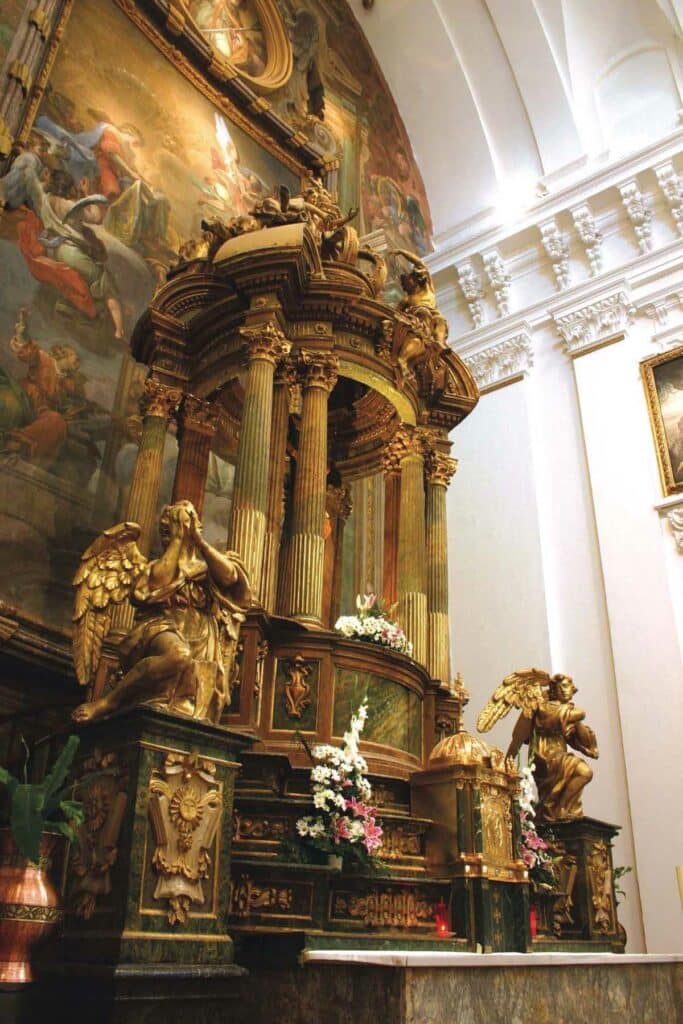
Virtual tour
Discover our best monuments as if you were there! Thanks to the latest technology you can enjoy an impressive 360º HD virtual tour. Get close to every corner and let yourself be surprised by every detail.
Contact details
- (34) 925 251 507
- tickets@toledomonumental.com
- Pl. Padre Juan de Mariana, 1, 45002 Toledo
- Schedule:
1 APRIL – 30 SEPTEMBER
10:00 – 18:45 *
1 OCTOBER – 31 MARCH
10:00 – 17:45 *
Open from Monday to Sunday.*
*The ticket offices will close 10 minutes before closing time.
* 1 January and 25 December closed.
* 24 and 31 December until 13:00
LOCATION
Birth house of Saint Ildefonsus
Patron Saint of Toledo
The history of the Iglesia de los Jesuitas (Church of the Jesuits) dates back more than three centuries. Tradition has it that it was built over the birth house of Saint Ildefonsus, Patron Saint of Toledo.
It was opened for worship in 1718. It has an original altarpiece in the main chapel consisting of a fresco painting, framed by columns and a frame painted in perspective, in what has come to be called trompe l’oeil.
Large baroque altarpieces on either side of the central nave make it a veritable museum of sculpture, many of which tell the story of the Society of Jesus, which has been present in the city for centuries.
Its enormous twin towers, more than 50 metres high, offer visitors a unique experience: enjoying the most privileged view of the medieval city and the imposing Toledo Cathedral.
History
of Iglesia de los Jesuitas
The Foundation
The Jesuits in Toledo
In 1558, the Jesuits received permission from Archbishop Carranza to settle themselves in the imperial city with the desire to also found a professed house since the city had a university. After occupying the Colegio de Infantes and other houses for two months, they finally moved to the Plaza del Salvador where they set up the professed house for a community including 12 priests, 3 students and 7 coadjutor brothers. In 1583, they opened a school, the San Eugenio school, run by 17 priests and coadjutor brothers, in a rented house in what is now San Miguel de los Ángeles street. When they began classes, there were 700 students. Soon, the premises of the school of San Eugenio was insufficient for the demand of students and devoted people, so they decided to buy a new, larger site in a quieter place, away from the bustle of commerce.
The house of Saint Ildefonsus
Tradition had preserved the place where the saint’s birthplace was located, which housed his veneration through a small chapel that in the 16th century was already embedded in the main houses of the fifth Count of Orgaz, Don Juan Hurtado de Mendoza Rojas y Guzmán, who release it to sale, communicating it to his Jesuit brother. The Society of Jesus decided to buy this place in 1569 in order to build a large church and professed house.
Don Pedro and Doña Estefania Manrique, two pious siblings
The purchases of plots of land to extend the initial houses acquired from the Count of Orgaz, including that of the Hospital de la Misericorda, -which had to be moved to avoid running out of the little sun it had-, were so expensive that the money available for construction was drained. Providentially, two pious siblings, Don Pedro and Doña Estefanía Manrique, came to the aid and they offer themselves as supporters by donating their entire inheritance. Both siblings were childless bachelors. He was a knight of the order of Alcántara and gentleman of the chamber of kings Philip II and Philip III and she was a lady of Queen Isabella of Valois, wife of Philip II and later retired to a life of devotion and charity.
Founding document of Don Pedro and Doña Estefania Manrique
“Considering that it is the tradition that the glorious Saint Ildefonsus, archbishop and patron saint of the city was born in these houses where we are currently granting this foundation, and because of the great devotion that we, Don Pedro and Doña Estefanía Manrique have to this glorious saint, we want and it is our will that the dedication of the said church, which is to be built in this way, be to this glorious saint and that his image be placed on the altarpiece of the main altar in the most relevant place”.
The founders’ tombs
A vault was intended to be built under the main altar to receive the remains of the founding brothers and their parents. On the main altar, two arcosoliums would cover their figures, kneeling in adoration towards the altar, two on each side, the brothers and their parents, Don Gaspar Manrique, knight of Santiago and Doña Isabel de Castilla. These projects were not executed because the work was completed decades later, at a time when these forms were no longer in use. However, the remains of the Manrique brothers rest on the doors of the chapels flanking the main altar. They were transferred to this place from the original chapel above the house of Saint Ildefonsus where they were originally buried. Their coats of arms, with the arms of the Manrique and Castile families, were placed on the pendentives of the cupula interior.
Consecration and worship
The first mass
In 1718, the main nave with its chapels was opened for worship thanks to a provisional brick wall that was erected at the end of the nave to close off the finished space until the transept and chancel were finally completed. Behind it, the original chapel over the house of Saint Ildefonsus was still erected. The event was celebrated with four days of festivities and a large turnout of devoted people.
The end of the construction work and the drama of the Expulsion
Finally, the work was completed in 1765 under the orders of José Hernández Sierra- who was from Salamanca-, who was in charge of the works on the transept, cupola, main chapel, octagonal part and sacristy. Two years later and by order of Charles III, the Jesuits were expelled from the territories of the Monarchy (Spain and the Indies) and their property was seized. The library passed to the archbishop’s office and during a period of time, the premises belonging to the Colegio de San Eugenio were occupied by the University of Toledo. Around 1820, it was partly used as rented houses for the account of the Holy Office and partly as offices for the Corregidor (a local administrative and judicial official) and the Police. From 1836 onwards, it was used exclusively for state offices, giving its name to the corresponding street: de las Oficinas. Finally, it became the headquarters of the Toledo Tax Office.
Return and presence in the 20th century
The return of the Jesuits to Toledo took place in 1903 with Blessed Cardinal Sancha, who allowed them to recover the church of Saint Ildefonsus and open a residence in the place where they had been until 2011, when, due to the lack of vocations, they had to close the house and go to Madrid. At present, the Church of San Ildefonsus has been constructed as a diocesan sanctuary of the Sacred Hearts.
Art in
Iglesia de los Jesuitas
Architecture
Magna Counter-Reformation architecture on the Jesuit church model
The temple, of enormous dimensions, represents a faithful exponent of Counter-Reformation spirituality. With a single nave flanked by side chapels that communicate with each other, its magna architecture is expressed in the great cupola that covers the space of the transept.
Although the church of the Gesú in Rome is the model for all the others, other more recent Spanish constructions has influenced the design.
In the deed of foundation of 1602, which specifies the measurements it should have and which correspond to the church built almost 30 metres long, the interest in building the church “in accordance with the one that the said Society has in the city of Palencia” is noted, although in 1605, it was ordered that the layout be taken from the church “that is being made in the College of Alcalá de la Compañía de Jesús, correcting the faults that are noted in it”.
Light for the Eucharist
As a Baroque church, -exponent of Counter-Reformation spirituality- the light is perfectly arranged in a gradual and theatrical way. It concentrates on the places where the Eucharist is exalted. The light is filtered throughout the central nave, leaving the side chapels in semi-darkness to keep all the luminous irradiation in the transept next to the high altar, whose cupola, through its eight windows, pours an abundant light stream over the place devoted to the consecration and veneration of the body of Christ.
The architect Monegro executes the sketch and the Jesuit master Pedro Sánchez executes the project.
The design -following the model of the Jesuit church of the Gesú in Rome and the Spanish churches of Palencia and Alcalá- is attributed to the master builder of the cathedral, Juan Bautista de Monegro. However, the Jesuit brother Pedro Sánchez, who had already demonstrated his ability and capacity, took charge of the construction, initiated in 1629, and who was then commissioned to direct the works in Toledo and the Imperial College in Madrid founded by the Empress Margarita, sister of Philip II. He probably proposed a new layout that involved the reform of the chancel and facade. The first stone was solemnly laid on 10 February 1629. The previous year, 200 rods of ashlars and blocks of stone -from the quarries of Ventas con Peña Aguilera- and more than one hundred thousand bricks had been ordered. Interestedly, the temple began to be built on the facade, in order to safeguard the worship in the original chapel above the house of San Ildefonsus, while the construction was in progress.
Francisco Bautista and the Baroque facade
When Pedro Sánchez died in 1633, he was replaced by another distinguished architect of the company, Brother Francisco Bautista, who had participated in the project for the Ochavo (octagonal part) or chapel of relics in Toledo cathedral. Bautista designed the baroque and daring facade. He transformed Monegro’s mannerist design into a more baroque and daring one. He additionally designed the decorative treatment of the interior with large plaster corbels and high cantilevered cornices, which invigorate the severe and restful conception of classical architecture.
Bartolomé Zumbigo and the Towers
In 1642 the work, which was progressing slowly, was interrupted for lack of resources.
In 1669, the Toledan architect Bartolomé Zumbigo took it up again by. Zumbigo erected the body of the nave and chapels to the height of the cornice, the second floor of the facade where he placed a large window that provides a cascade of light to the nave and the second floor of the towers that would be finished off with their bell towers along with the rest of the facade in 1701.
José Hernández Sierra and the domed transept
It was not until 1752 that work on the church was restarted again under the orders of José Hernández Sierra, -the cathedral’s quantity surveyor from Salamanca-, since until then, the efforts had been placed on the adjacent building destined for a professed house or Novitiate under the dedication of San Eugenio. It was then the turn of the covered transept with its false dome or dome with a wooden armature, over a circular drum covered with plaster on the inside and octagonal brick on the outside, covered with slate slabs from the Guadalupe mountain range. The wooden oriel windows lined with good look materials were the ingenious solution to the ostentatious Baroque domes in Spain, a country immersed in economic crisis and in bankruptcy. Sierra also designed the new sacristy based on the cathedral’s, that of the neighbouring monastery of San Pedro Martyr and that of the Hospital of San Juan Bautista. The work was finally completed in 1765, just two years before the expulsion of the Society of Jesus from Spain by order of Charles III.
Sculpture
Altarpieces and chapels for the saints
In the first project, the altars of the chapels were to be intended for the saints: Peter, Paul, John the Baptist, Benedict, Mary Magdalene, Joseph and Stephen, all of them particular devotions of the founders. For the inauguration in 1718, the altarpieces dedicated to Saint Ignatius, Saint Francis of Borgia, the Holy Christ and Our Lady of Peace, the work of the sculptor Vicente Alonso, were placed. Currently, the side chapels are dedicated to Saint Francis Borgia, the Crucified Christ, Saint Francis Xavier, the Virgin of Fatima, the Immaculate Conception, the Dolorosa, Saint Ignatius and the martyrs of the civil war.
The second chapel in the Epistle nave is dedicated to Saint Francis Xavier, depicted in the centre of the altarpiece, the work of Pedro de Luna, in the throes of death off the coast of China, while the angels descend to collect his soul.
The third chapel houses the crucified Christ carved around 1580 by the Jesuit Domingo Beltrán, with its pathos in colour and its serpentine figure that twists, very much in the mannerist style. There are evidences of the growing devotion of the people of Toledo to it. It was placed here, accompanied by two powerful figures of the Virgin and Saint John, probably the work of the Tomé workshop, the authors of the famous Transparente of the Toledo Cathedral.
On the left side or gospel nave, the third chapel contains an image of Saint Ignatius of Loyola from the 19th century, in a beautiful finely carved and gilded altarpiece, with mirrors in the niche, very reminiscent of the rococo style.
The great altarpieces of the transept
The transept exhibits its magnificent altarpieces from the now disappeared church of San Juan Bautista, which replace the original altarpieces executed by Pedro de Luna. On the right is the former main altarpiece with a canvas of the Baptism of Christ painted in 1702 by the deaf-mute artist from Madrid, Alonso del Arco. On the left, the former altarpiece of the carpenters’ guild, also from the same parish, by the hand of Mateo de Medina, with the magnificent image of Saint Joseph carved by Germán López Mejía.
Germán López Mejía is also the author of the apostolate in the nave and transept, and of the precious image of the Virgen del Socorro in the reliquary chapel, an octagonal space destined for the exaltation and worship of relics.
The apostolate
Throughout the nave, transept and main chapel, there are fourteen figures of the apostles carved by the sculptor Germán López Mejía: Peter, Paul, John, James, Andrew, James the Less, Matthew, Thomas, Philip, Judas Thaddeus, Bartholomew and Simon, to which are added Matthias and Barnabas.
Painting
Trompe l´oeil
The main chapel is presided over by an original altarpiece consisting of a fresco painting. It appears framed by columns and a frame painted in perspective, in what has come to be called trompe l’oeil, due to the illusion of fake architecture created by the painting, which, like the architectural shrine of the altar, is the work of the Velázquez brothers, Luis and Alejandro-the latter a professor of perspective at the Royal Academy of Fine Arts in Madrid.
It depicts the most important event in the life of Saint Ildefonsus in the very place where the saint lived: the miracle of the Descent of the Virgin to impose a chasuble on Saint Ildefonsus -which according to tradition took place on the site of the cathedral- as a reward for the defence that the 7th-century bishop of Toledo put up against Jovinian and other heretics in his work De perpetua Virginitate. In the scene depicted, the book is exalted and shown by an angel while others set fire with torches to the writings of the heretics.
The reliquary, sancta sanctorum of the temple
The foundress had already insisted in the deed of foundation on the provision of “a chapel for a sanctuary and the placing of relics with the decency befitting such a place”. The love and worship of relics, against the refusal of the Protestants, was reinforced in the recent Council of Trent and is reflected in these sacred spaces, filled with beautiful reliquaries in delicate carvings of sculpted busts and pieces of gold and silver work. The octagonal shape alludes to the number eight, which epitomises eternity. The red colour of the walls symbolises the blood and love of the martyrs, witnesses and continuers of Christ’s sacrifice. The whole complex is presided over by the spectacular rococo altarpiece by Pedro de Luna- also the author of the reliquary cabinet- with the image of the Virgen del Socorro by Germán López Mejía, in an attitude of defending a soul from the infernal dragon with a dart.
Worship
TIMETABLE OF MASSES IN THE IGLESIA DE LOS JESUITAS
WINTER TIMETABLE
|
Diary
|
Vespers
|
Sundays and Holidays
|
|---|---|---|
|
19:30
|
19:30
|
19:30
20:30 |
SUMMER TIMETABLE
|
Diary
|
Vespers
|
Sundays and Holidays
|
|---|---|---|
|
20:00
|
20:00
|
20:00
21:00 |
Visitors' comments
Comments and opinions of visitors on the Iglesia de los Jesuitas
Visit the rest of Toledo's outstanding monuments
Visit all monuments at a very special price?
WRISTBAND
Day visit of seven monuments for only 12€
